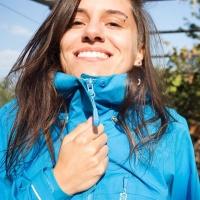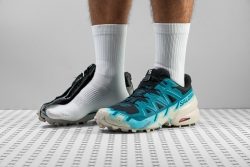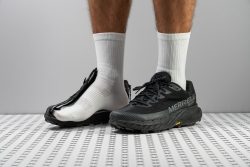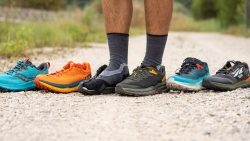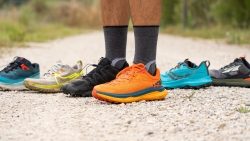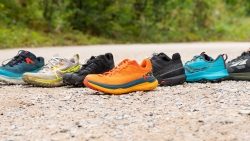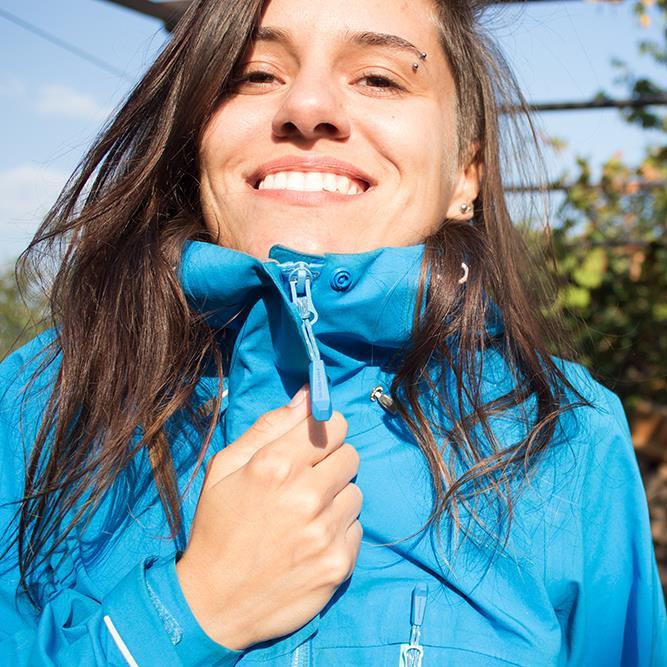3 Best Waterproof Trail Running Shoes in 2025
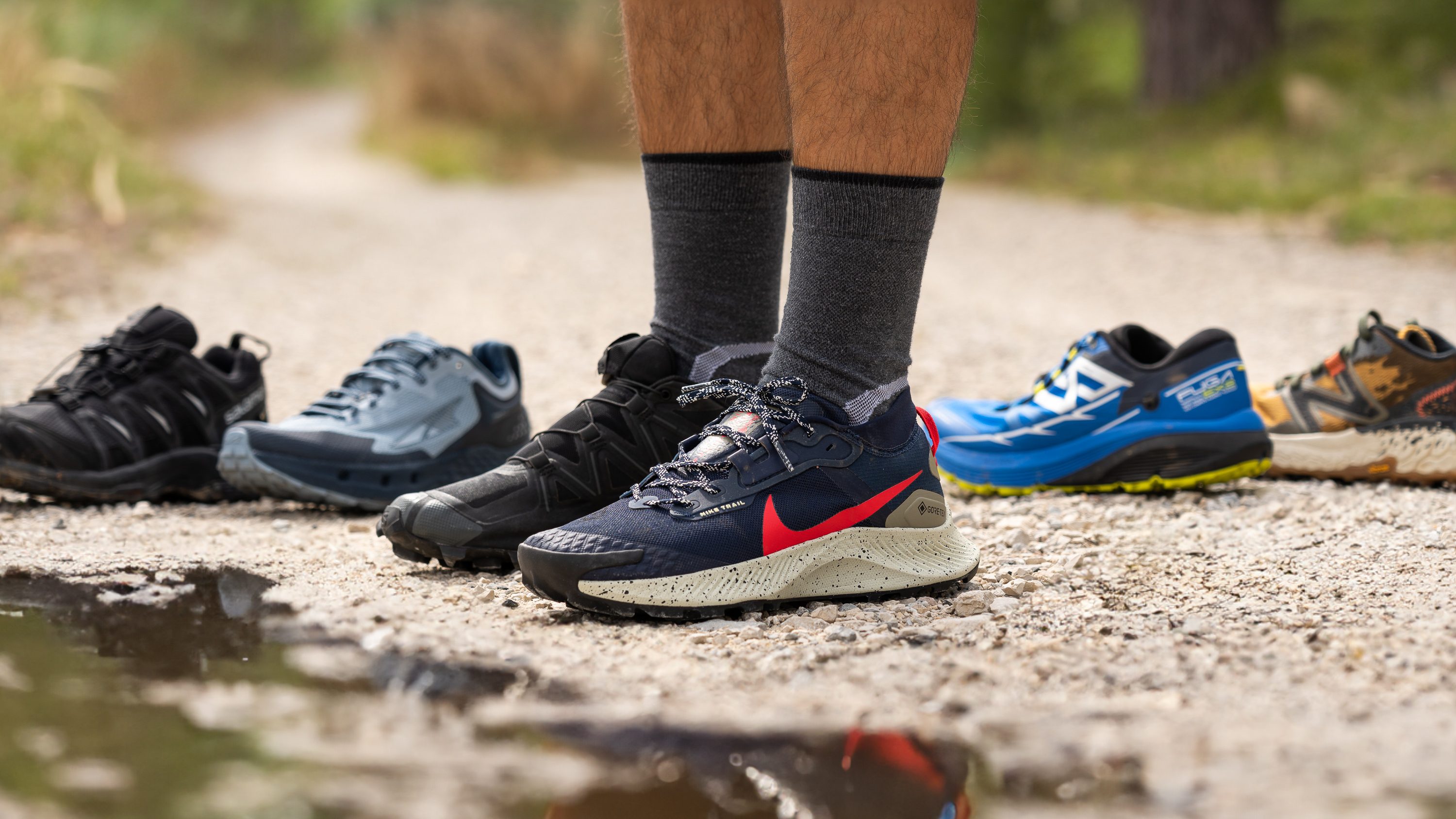
We buy shoes ourselves. We earn commissions when you buy through us, at no extra cost. Why trust us
The trails aren’t the friendliest. Apart from jagged rocks and roots, there are also some stream crossings and other wet conditions you have to endure.
And when faced with these, your trusty go-tos are waterproof trail running shoes. They keep your feet dry and protected. So much so, they can even be your pair of winter running shoes.
We took it upon ourselves to test waterproof trail shoes so that you can simply look at the best of the best and choose a pair that matches your preferences!
How we test waterproof trail running shoes
It’s easy to get lost, given the number of waterproof trail running shoes on the market. But fret not, we have personally bought and tested waterproof trail running shoes and selected the best in different categories.
Before we came up with our list, we made sure to buy each pair with our own money. We then examined each shoe from top to bottom. Here's our workflow:
- We ran in each waterproof running shoe model on various surfaces and in different conditions
- We cut them open to see what’s inside
- We measured the shoe's weight, shock absorption, energy return, traction, flexibility, breathability, insole thickness, outsole hardness, and other features.
- When it comes to waterproofing, the upper matters the most. Once we cut the shoes in half, we were able to see a second layer on the inside - the waterproof membrane. The Gore-Tex one is usually grey.
Trail waterproof running shoes with the best traction
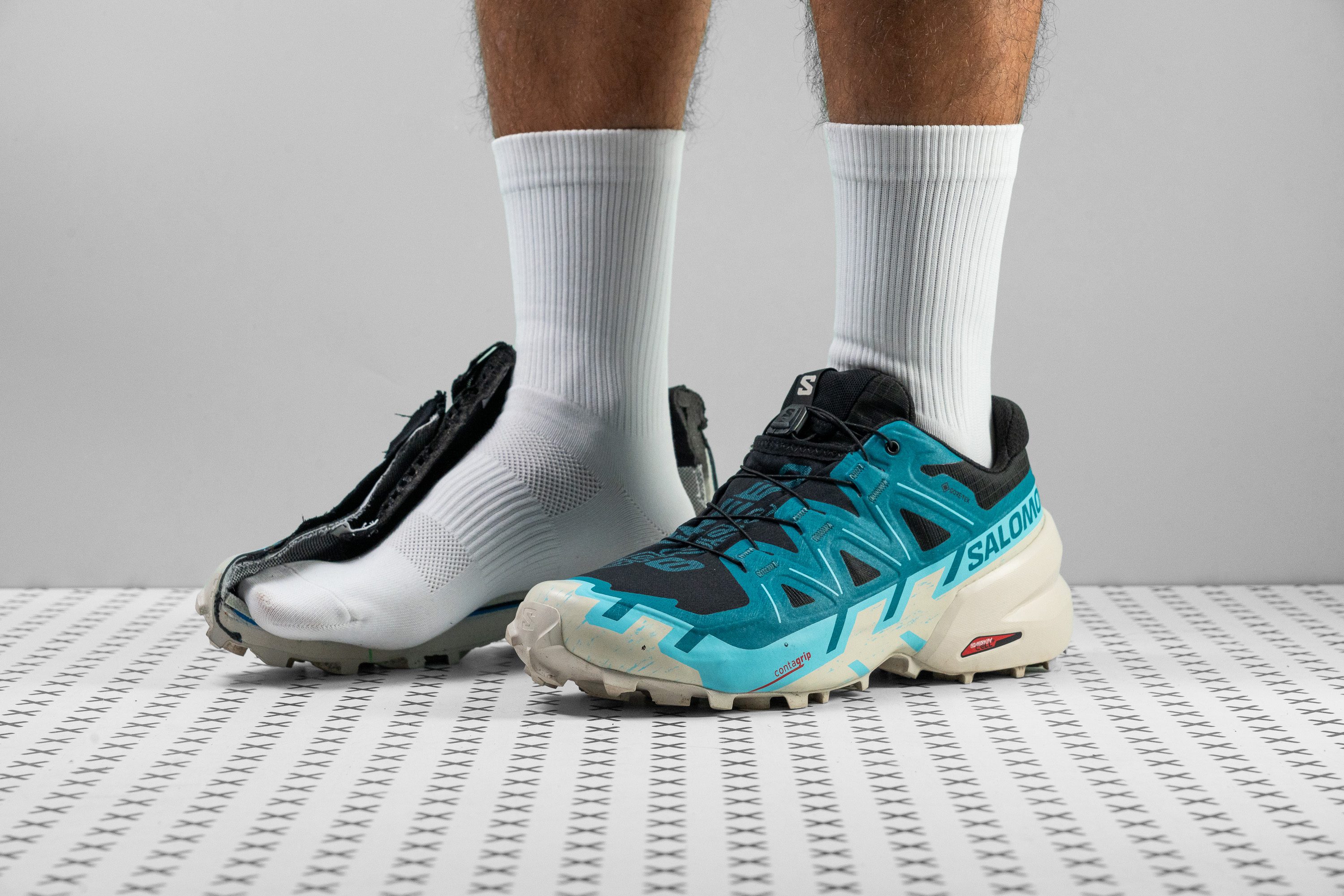
















































What makes it the best?
Our test runs and lab analysis show that Speedcross 6 GTX offers the best grip among trail waterproof running shoes. It’s built for action and technical terrains — ensuring we’re in control with its deep lugs, protective upper, and supportive platform.
We felt steady on loose gravel, muddy terrains, and wet paths thanks to the reliable traction of the 5.0 mm lugs. Our caliper measurement shows it’s 1.5 mm deeper than average, giving that extra bite on softer ground. The lugs are cleverly spaced to shed off mud and are chevron-shaped to act as brakes on hills and sharp turns.
Speedcross ensures our feet remain dry on rainy days and below-the-ankle river crossings. Under our microscope, we noticed one of the densest uppers we’ve seen. It leaves no room for air to pass through, and all the more water! It scored the lowest 1/5 on our lab breathability test.
The platform blends rigid and fluid elements for support and comfort. The foam provides enough cushion for relief yet feels firm for stability. Our durometer confirms it’s 21.3% harder than average. Speedcross allows for longitudinal flexibility yet it's hard to twist, earning the highest 5/5 on our torsional rigidity test. Together with the stiff heel, we remain steady even on challenging terrains.
Unfortunately, its 11.5 oz (325g) weight is hard to ignore and feels quite heavy on foot.
Pros
- Fully functional Gore-Tex membrane
- Ample cushioning for long adventures
- Excels in challenging, technical terrain
- Rapidly sheds mud
- Agile and tenacious grip on twisted trails
- Remarkable durability
- Ideal for heel strikers
Cons
- Completely lacks breathability
- Midsole could feel overly firm for some
- Exceptionally heavy
- Narrow, snug-fitting toebox
Waterproof trail running shoes with the best foot protection
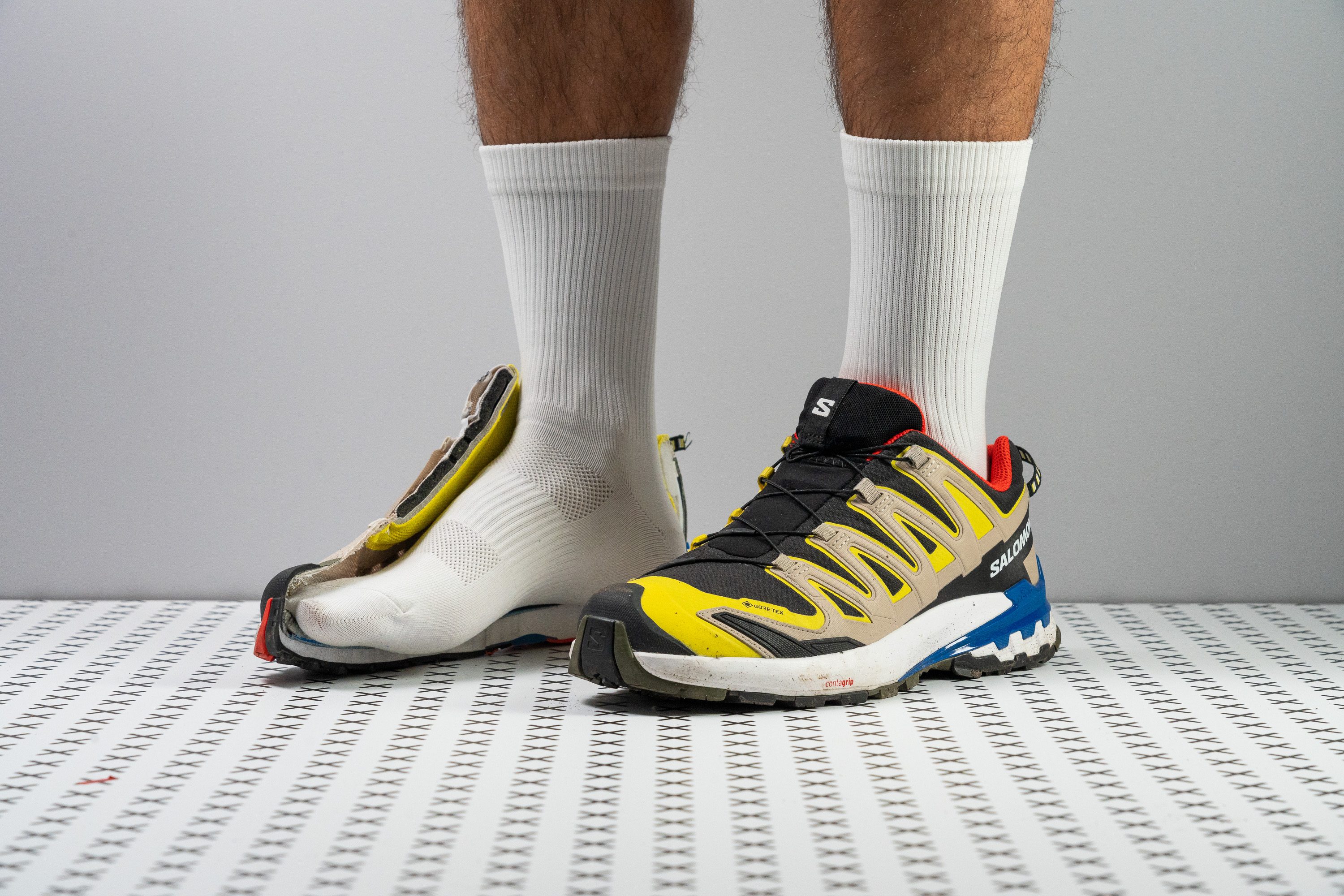













































What makes it the best?
The Salomon XA Pro 3D v9 GTX is a shield like no other, offering defense from top to bottom so we can run confidently in various terrains. It’s built like a tank with its dense upper, firm cushion, and balanced outsole. Our lab results back up our run observation that this trail waterproof running shoe delivers the best foot protection.
We first tested the Gore-Tex upper through our smoke and light test, and it cemented its impermeability by receiving a low 1/5 score. Low doesn’t mean bad because this confirms it’s extremely protective against water, cold weather, and debris.
Moving to the next layer, the cushion has a brick-like feeling, which our durometer confirms is a firm 32.5 HA. We found that it dampens landing impact well and maintains our balance since it doesn’t bottom out. The stiff 3D chassis also serves as an additional stability element and rock plate of the shoe.
Underfoot, this trail monster is supported by a Contagrip outsole with 2.8 mm lugs. We have no issues with its traction on loose sand, snow, and rocks. The shoe also displayed minimal wear after miles of outdoor testing, proving its durability.
Unfortunately, all the extra protection comes at a heavy 12.7 oz (359g), 22.1% heavier than average. Backpackers and hikers might appreciate this shoe more than speedy, agile runners.
Pros
- Incredibly protective
- Extremely stable and supportive
- Watertight Gore-Tex upper
- Flexible and forgiving on the foot
- Makes a great hiking companion
- Effectively dampens landings
- Generously padded from heel to tongue
- No lace bite whatsoever
- Durable, high-quality construction
- Simple yet snazzy design
Cons
- Could be lighter
- Rather firm cushioning
- Upper needs breaking in
- Lacks the agility for technical trails
Best waterproof trail running shoes overall
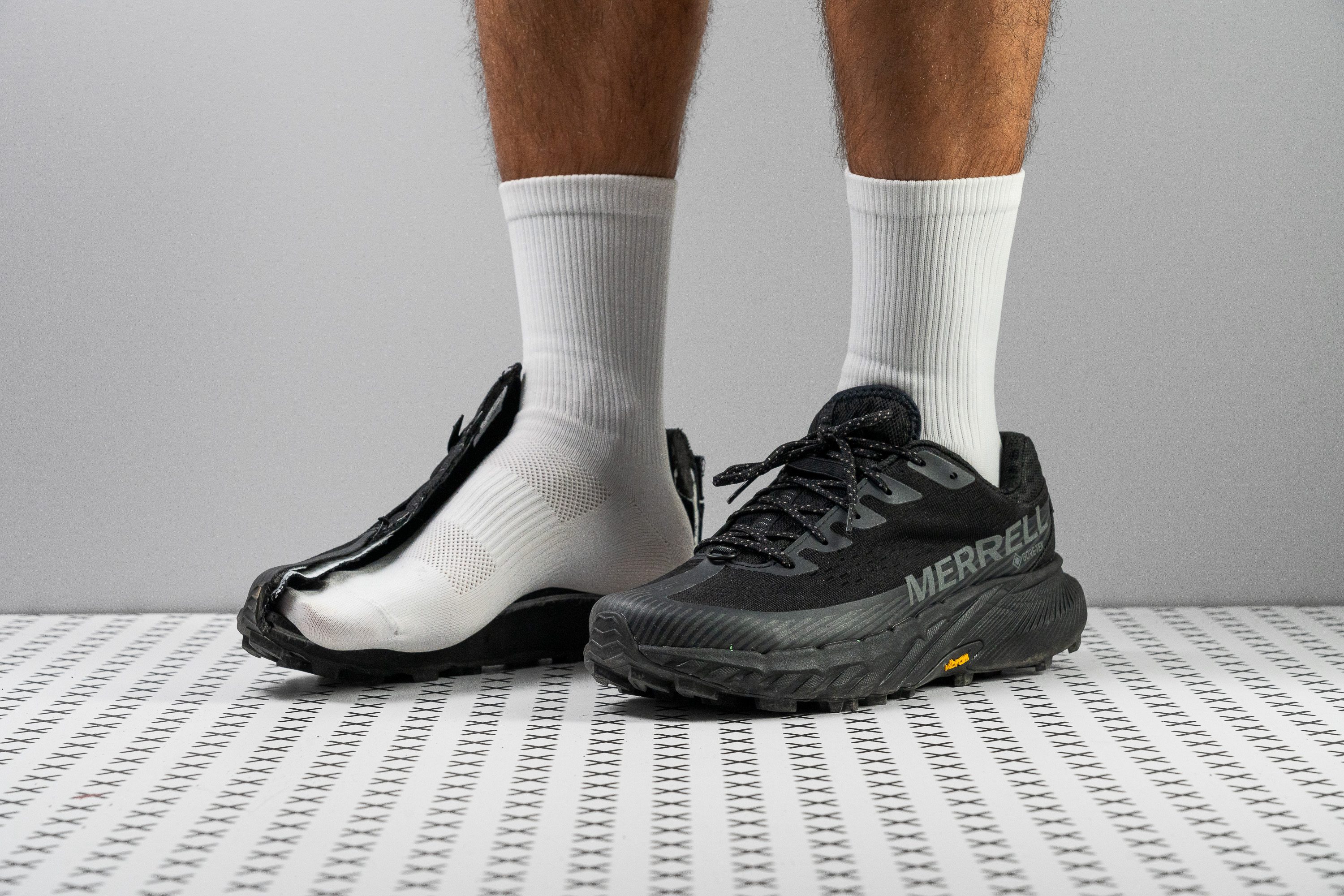













































What makes it the best?
All-around protection, incredible traction, and lasting comfort—these are just some of the qualities we verified in the lab and experienced in our runs, making the Merrell Agility Peak 5 GTX the leader of trail waterproof running shoes.
The upper can surely take a beating, proving itself durable as our brutal Dremel barely made an impact on the upper. We awarded it an above-average 4/5 in toebox durability. Wrapped in Gore-Tex membrane, it serves as our defense against wet and cold elements. Not a drop of water had access to our feet, with our smoke test confirming its impermeability with a 1/5 breathability score.
We ran on wet grass, uneven terrains, and even snow to test the outsole’s traction. We’re ultimately impressed with the Vibram’s grip as we remained in control the whole time thanks to its 4.4 mm chevron lugs.
Agility Peak 5 GTX offers underfoot protection through its rock plate. Moreover, the foam comes at a generous rear stack height of 37.3 mm, 4.7 mm above the average trail running shoe. To say that our feet enjoyed maximum protection and TLC during our outdoor adventures is an understatement.
Unfortunately, the Vibram rubber disappointed us in terms of wear resistance. Our Dremel shaved off a deep 1.4 mm dent, so we recommend avoiding abrasive surfaces like asphalt and cement to prolong the shoe’s life.
Pros
- True waterproof protection
- Grippy, trail-ready Vibram outsole
- Perfect for cold, wet climates
- Can handle some challenging conditions
- Stable yet cushioned heel
- Improved for hiking and walking
- Well-designed outsole lugs
- Great build quality
- Keeps feet warm
- Rock plate
Cons
- Narrow toebox
- Heel padding durability concerns
- No reflective elements
- Drop differs too much from stated
What to look for in waterproof trail running shoes
Hitting the trails covered in puddles, mud, snow, slush, or running while it’s raining means you really need to get a) waterproofness and b) superb grip from your shoes.
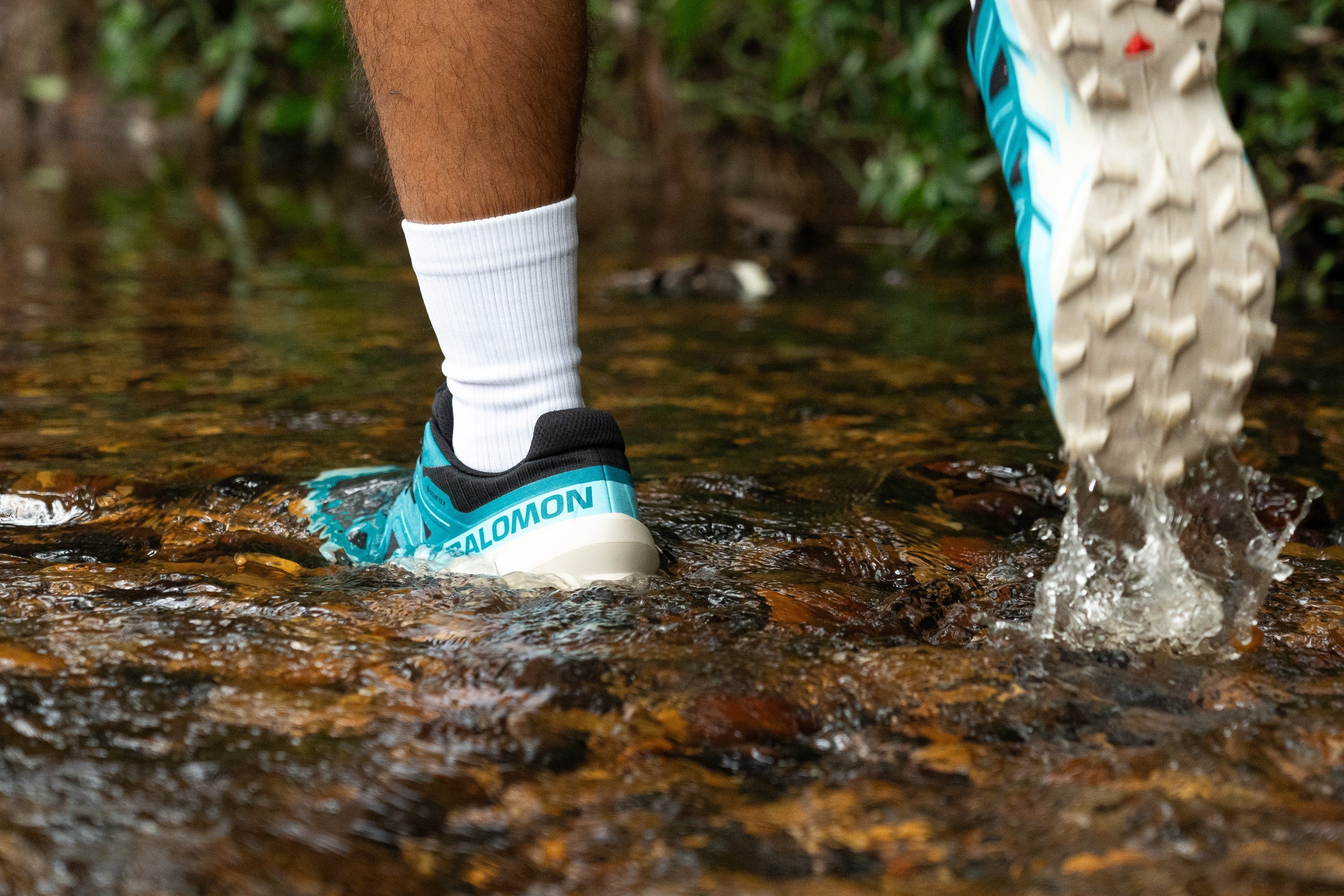
Waterproof shoes are rather easy to recognize because brands make sure to highlight that feature. And when it comes to the grip, it’s all about the lugs: their depth, shape, orientation (tread pattern).
How to recognize a waterproof upper
Brands always highlight when the shoe is waterproof. This means that, in the name of the shoe, you might see Gore-Tex, GTX, WP, Waterproof, etc. These all mean that the upper is waterproof, where Gore-Tex is the most popular waterproof membrane of choice.
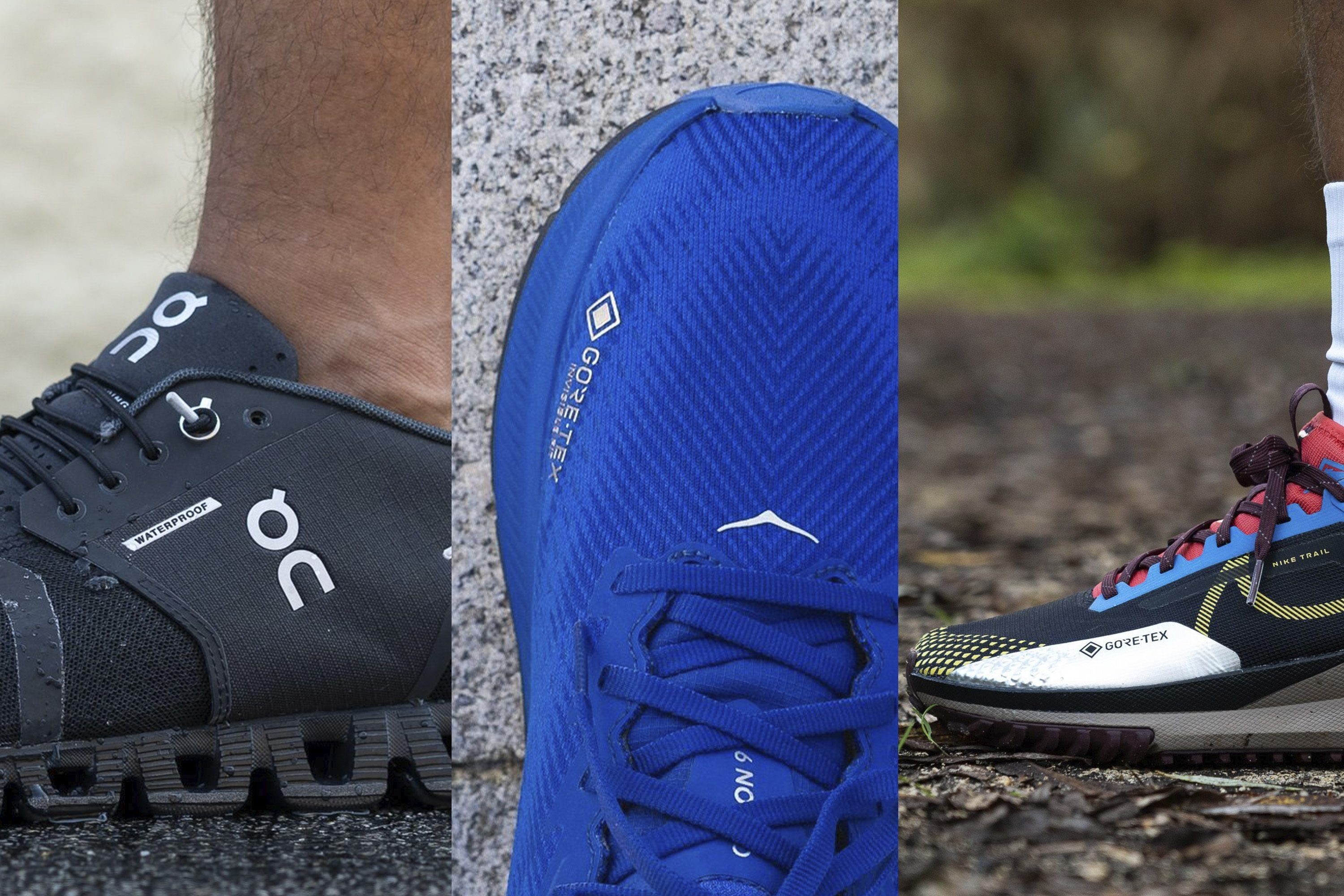
However, many brands develop their own waterproof materials. It’s important to read the label. And, if you’re familiar with the names, you can look at the upper and find the proof of waterproofness.
There are 2 more things you can examine: 1. The upper is usually very tightly woven and 2. The waterproof membrane is visible on the inside as a separate lining under the upper.
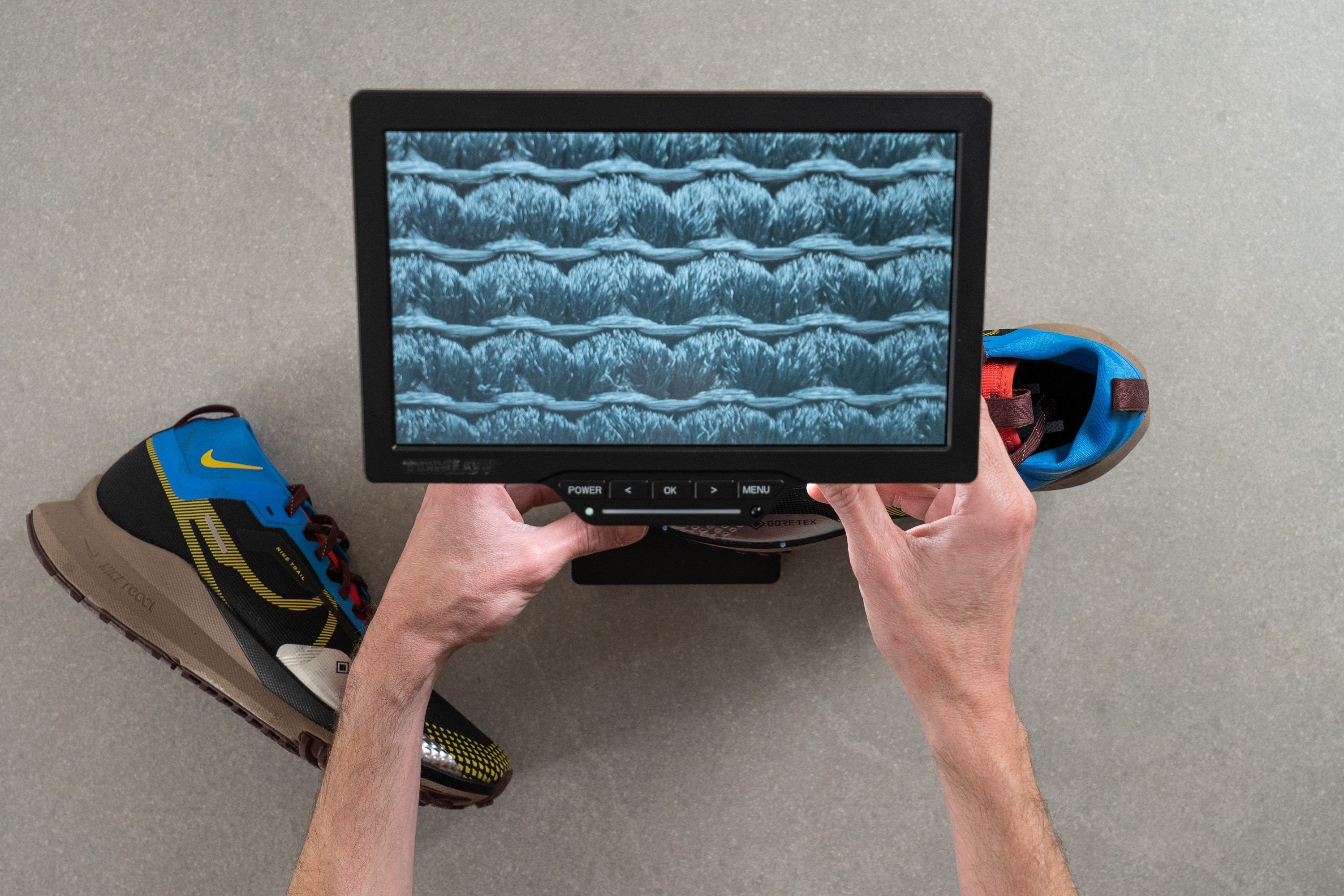
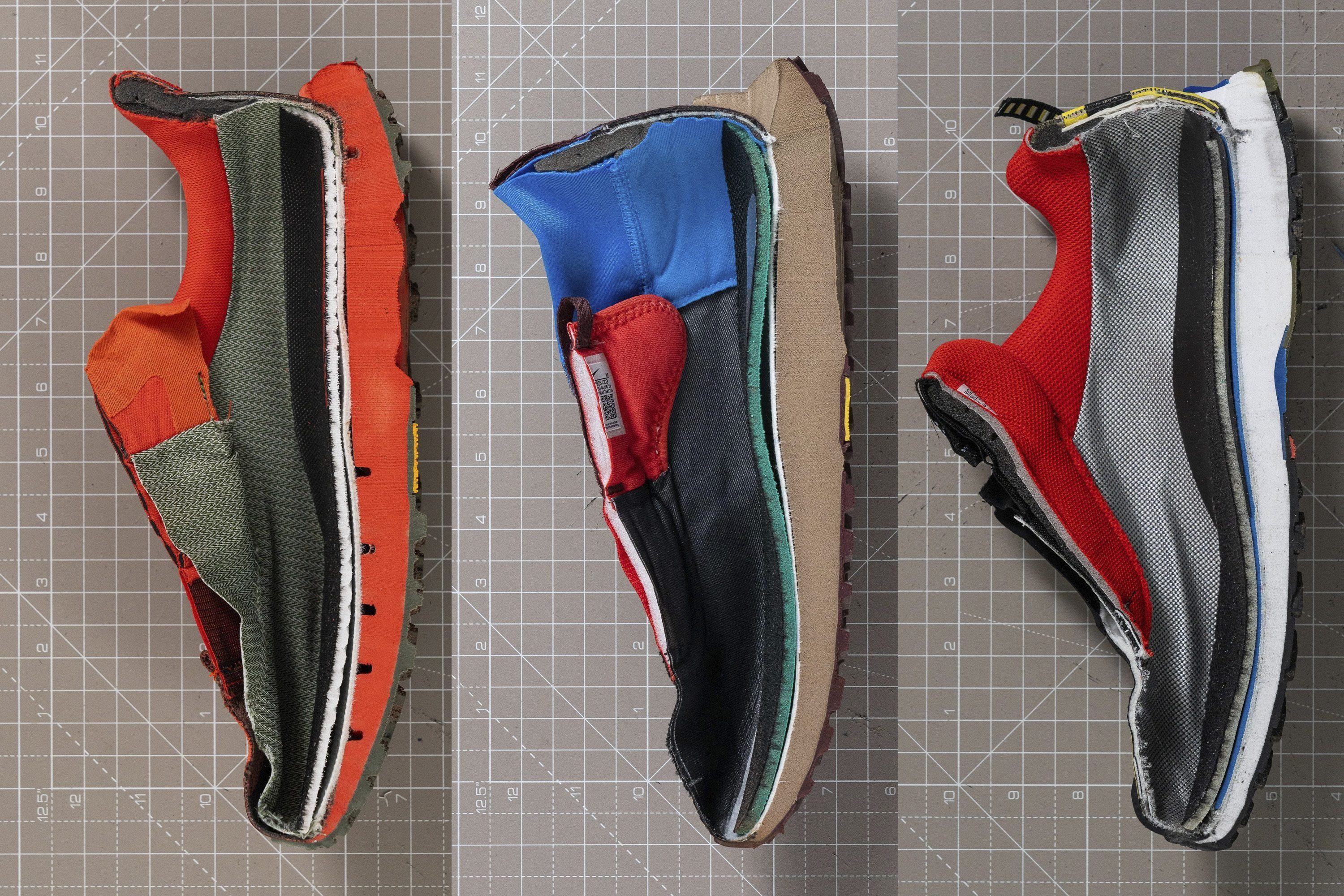
Waterproof trail running shoes usually feature a gusseted tongue to prevent water from getting inside the shoe if the tongue moves to the sides or simply to add an extra protective layer.

A tongue gusset is a separate piece of material that connects the tongue to the sides below the eyelets, or the tongue itself is wider in that area and stiched to the sides.
Which weather conditions will push the limits of your waterproof trail running shoes?
How much water can a certain fabric withstand is measured by the hydrostatic head. The unit is millimeters. This hydrostatic head is measured by putting a 1’’ x 1 ‘’ tube over the fabric and filling the tube with water. The amount of water (in millimeters) that the tube can take before the water leaks through the fabric is called the hydrostatic head.

The lower the water level, the less waterproof the material. This applies across all apparel and gear, not just footwear. Often, when looking for waterproof (hard shell) jackets, pants, backpacks… you will see the hydrostatic head in the specifications. Comparing the given number to the one in the table below will let you know which weather you can use your outdoor equipment in.
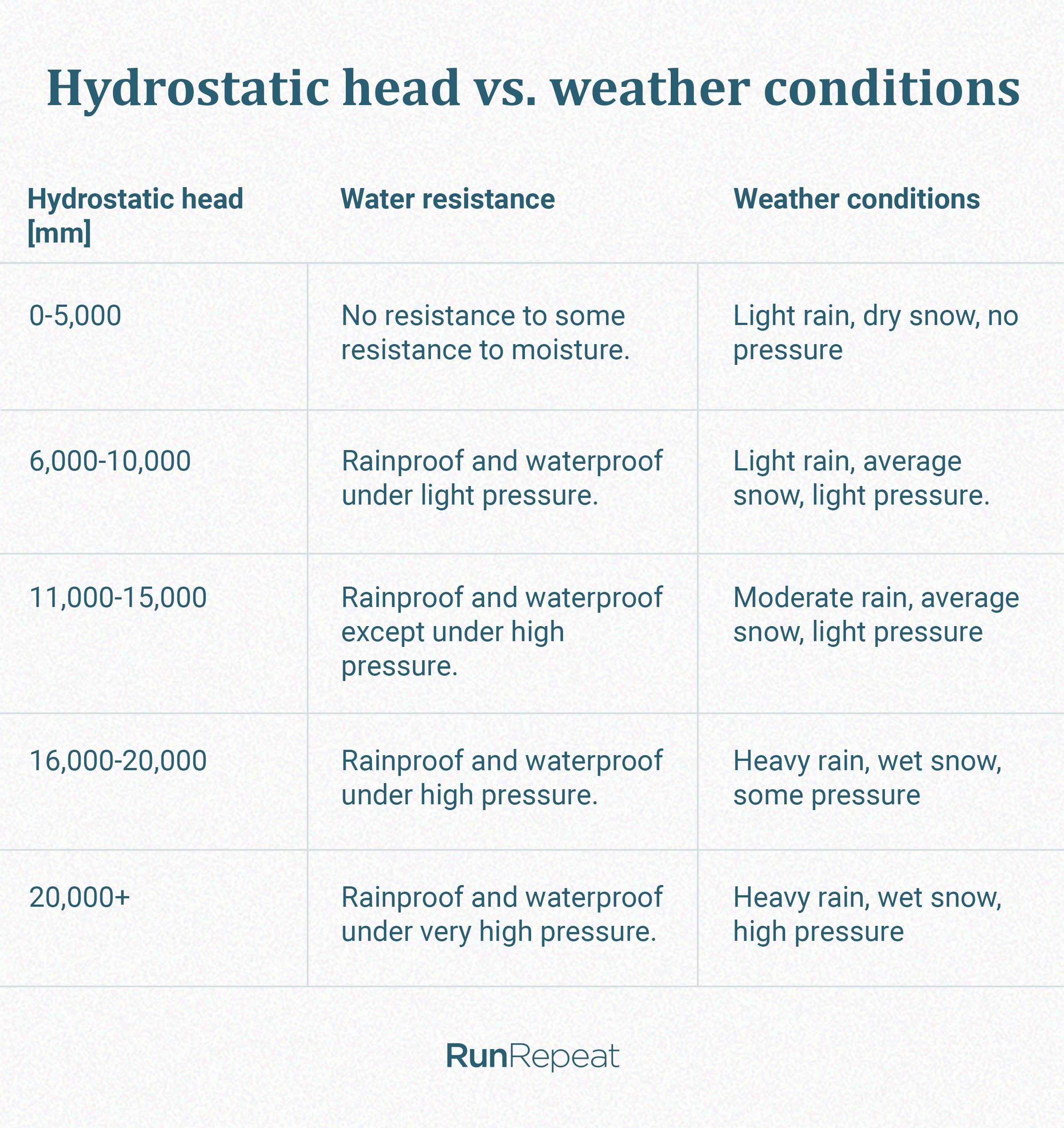
Do you really need waterproof trail running shoes?
Would you be OK with water-resistant or water-repellent trail shoes, maybe?
| Water-resistant | Water-repellent | Waterproof | |
| General characteristics | a tightly woven fabric that is naturally capable of resisting water upon contact | fabric treated with durable water-repellent (DWR) or hydrophobic chemicals | - fabric treated with DWR - have waterproofing membranes like Gore-Tex and OutDry - have seam-sealed construction for extra protection |
| Water protection level | low water protection | moderate water protection | high water protection |
| Water pressure resistance | 0-5000 mm (no pressure or moisture) | 6000-10000 mm (light pressure) | 10000-20000 mm (high to very high pressure) |
| Weather conditions best used in | light rain shower and dry snow | light rain and average snow | moderate to heavy rain and average to wet snow |
Here’s why you should reconsider getting waterproof trail shoes:
- They are not breathable. When the water gets inside, it’s not getting out. It can get inside in case the water levels or the weather conditions are simply too much, or the water can slide down your legs or trousers and get into your shoes. This can lead to blisters, sliding inside the shoe, etc.
- They are more expensive than the non-waterproof shoes.
- There will only be a few small sections on the run where you might need waterproof shoes. For example, if you’re running a race that’s 50km long and there’s only a few meters of puddles, mud, or snow, in waterproof shoes, you’ll have to deal with the non-breathability almost all 50km. In non-waterproof trail shoes, maybe the water will get inside, but (considering it’s not freezing cold) the heat from your feet might dry out both the socks and the shoes if you just keep running.
If you’re considering getting non-waterproof trail shoes, look for one with a mesh uper instead of a knit one. Mesh breathes better, and dries faster, while the knit upper soaks all the water in and becomes soggy and heavy. We’ve covered running shoe uppers in the highest level of detail possible in our guide Running shoe upper: how to choose the best one for your needs.
Nail the grip in trail waterproof running shoes
When running on trails in wet weather, it’s important to have shoes that bite. Here, in our lab, we focus on 2 things: the softness of the rubber and the depth of the lugs.
We use a shore C durometer to measure the softness of the rubber. This is important because usually the harder rubber is more durable and protective (think sharp debris) but soft rubber is stickier, more pliable, more flexible.

Then, we also use a digital caliper to measure the thickness of the lugs. The deeper the lugs, the more the shoe bites, especially in mud, slush, snow.
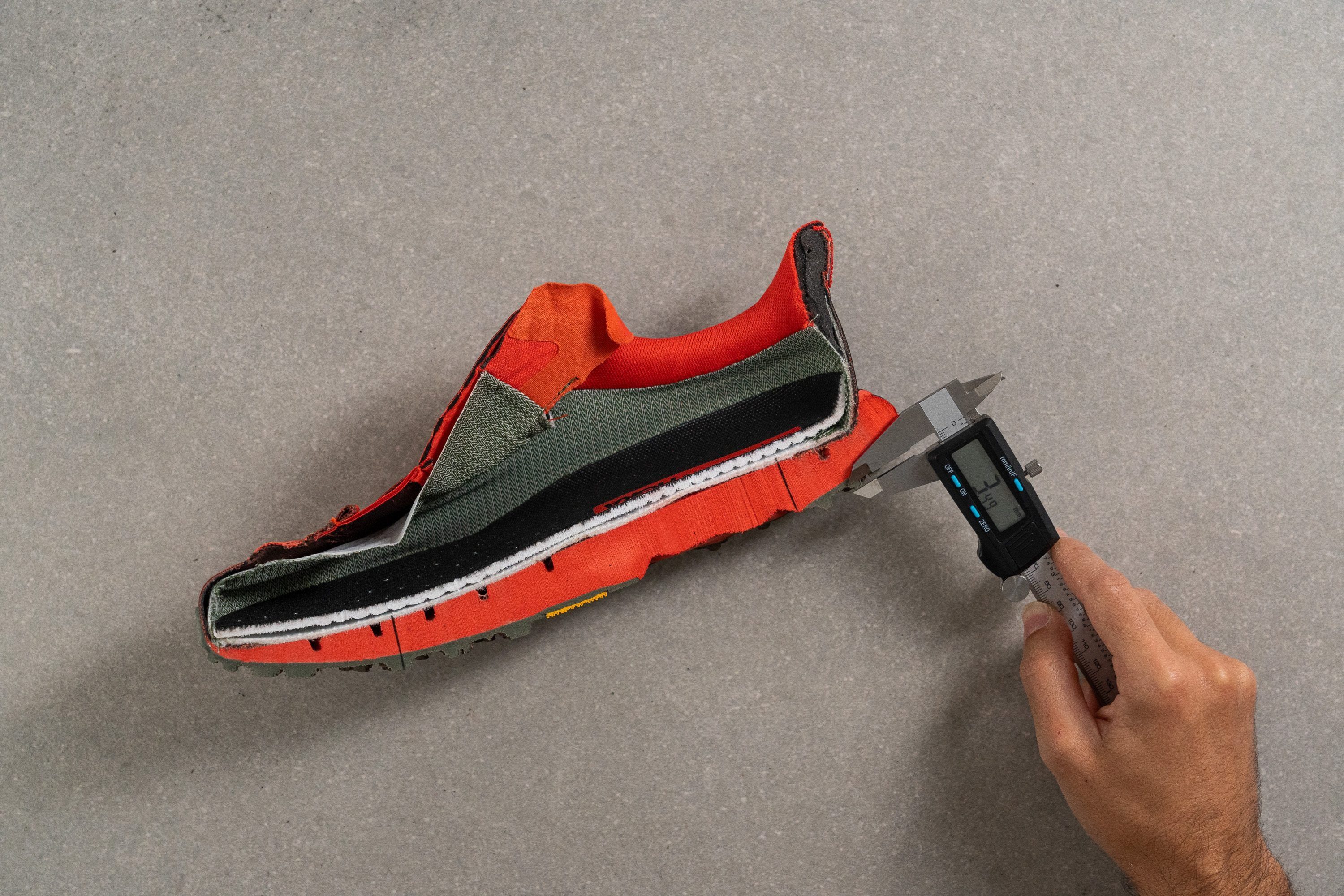
Of course, it’s not just about how deep the lugs are. It’s about their shape, orientation and overall pattern. Those that are spaced further apart allow for better mud shedding.

If you want to learn more about the outsoles, we recommend reading our guide In-depth insights into running shoe outsoles (road & trail).
Durability of waterproof trail shoes
Usually, the brands differentiate between soft-ground and hard-ground trail shoes. However, it’s not always the case or, at least, there’s no guarantee that the terrain will always be the same.
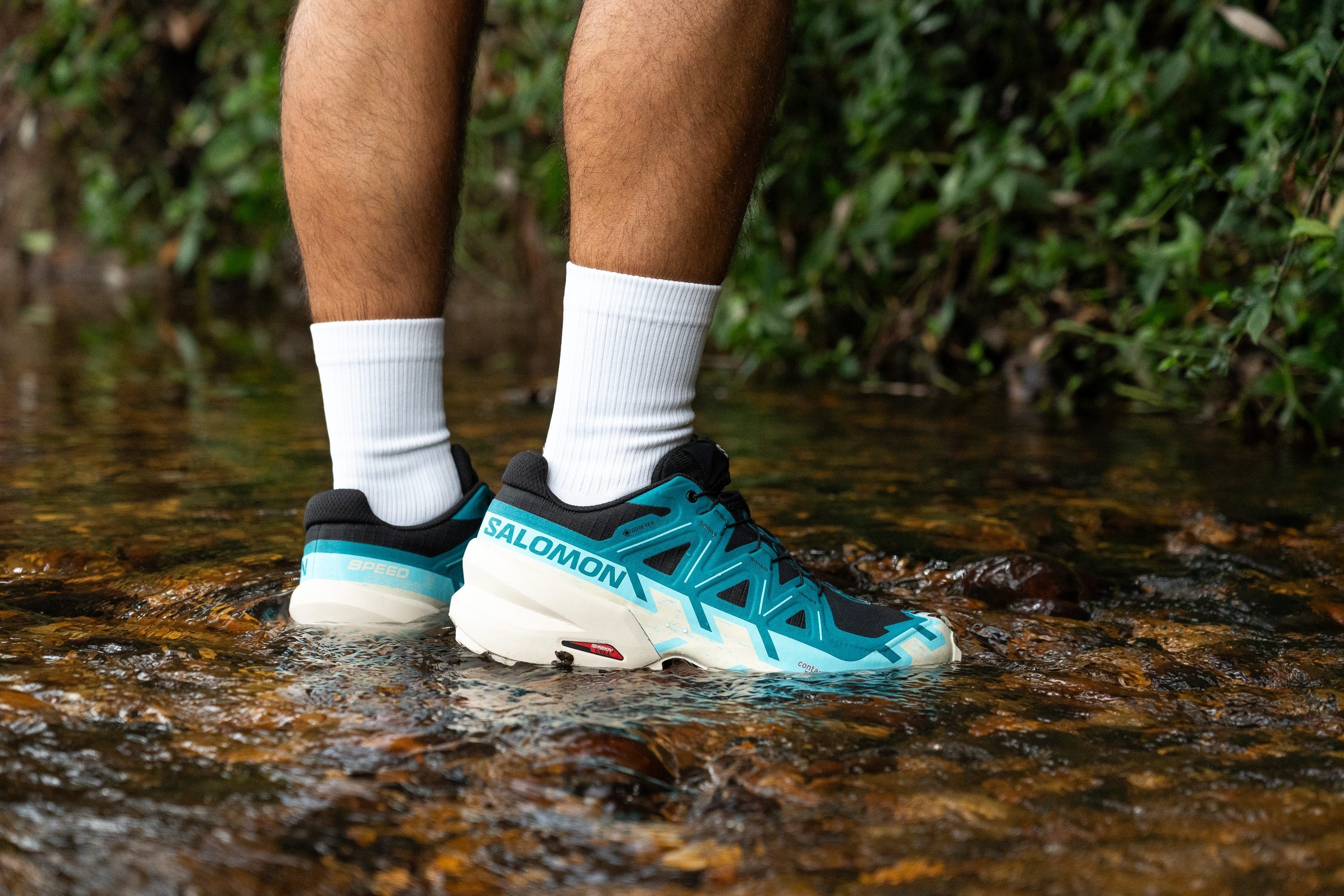
If your runs involve sharp rocks, debris, technical terrain, obstacles… you should pay attention to the durability.
In our shoe lab, we test this with a Dremel. We press it against the outsole, always at the same RPM, pressure and time duration, and then we look at the damage we’ve made.
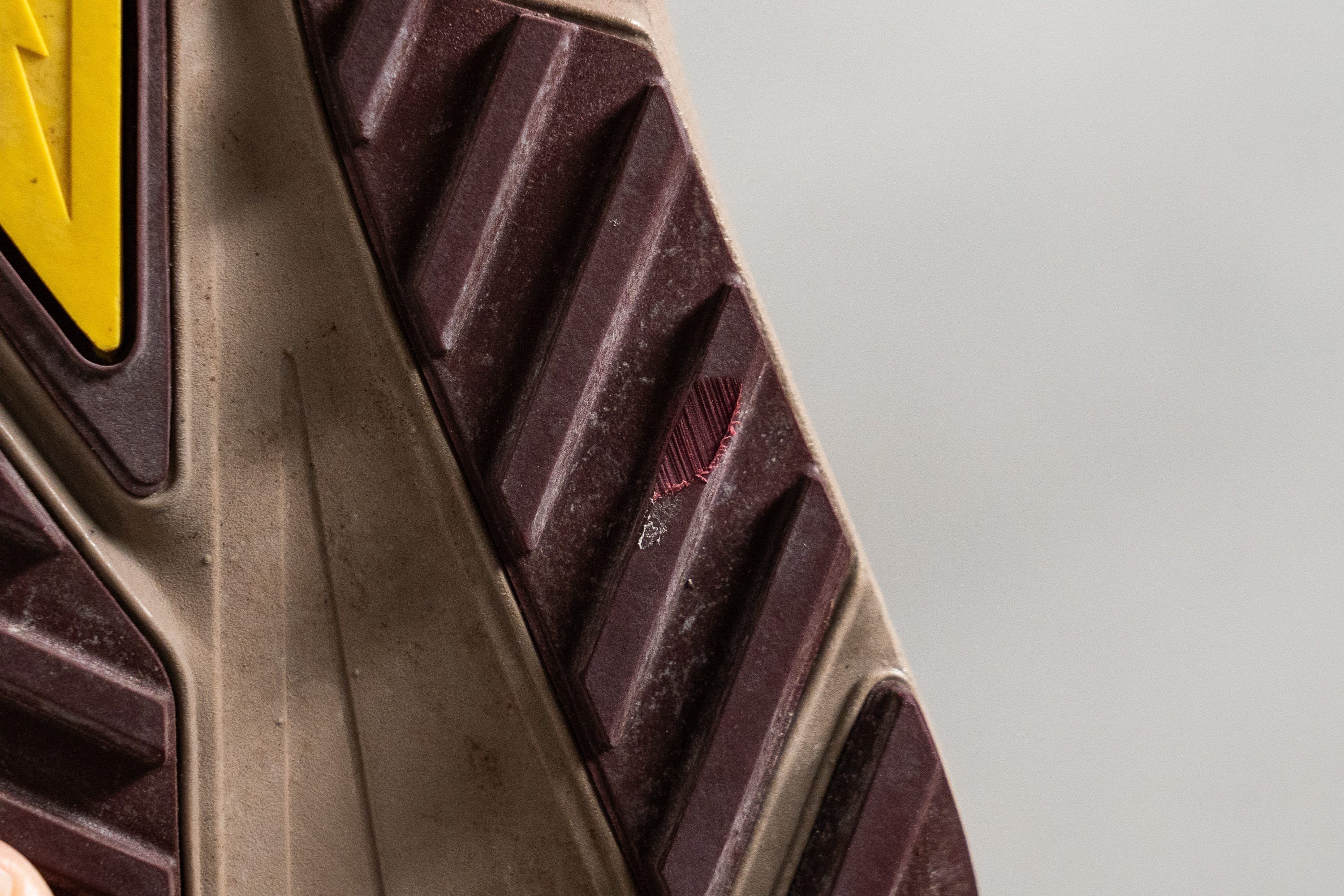
We then use a tire tread gauge to precisely measure how deep the dent is. The shallower the dent, the more durable the outsole.
Not breathable, regardless of what the brands say
Many brands claim that their waterproof trail running shoes are breathable. Experience has taught us otherwise and we’ve backed it up in our lab.
Breathability of a GTX shoe compared to a non-GTX one
In the lab, we pump the smoke into the shoe and watch where the smoke comes out and at which pace. Based on that, we assess the breathability on a 1-5 scale, where 1 is the least breathable. Waterproof shoes usually get 1 or 2. While many other trail shoes get 4 or 5!
For another inspection, we look at the upper under the microscope. There’s such a clear difference between the non-waterproof and waterproof uppers. The non-waterproof ones have a looser structure and sometimes very large ventilation holes. The waterproof uppers usually feature VERY tight threads and no visible vent holes.
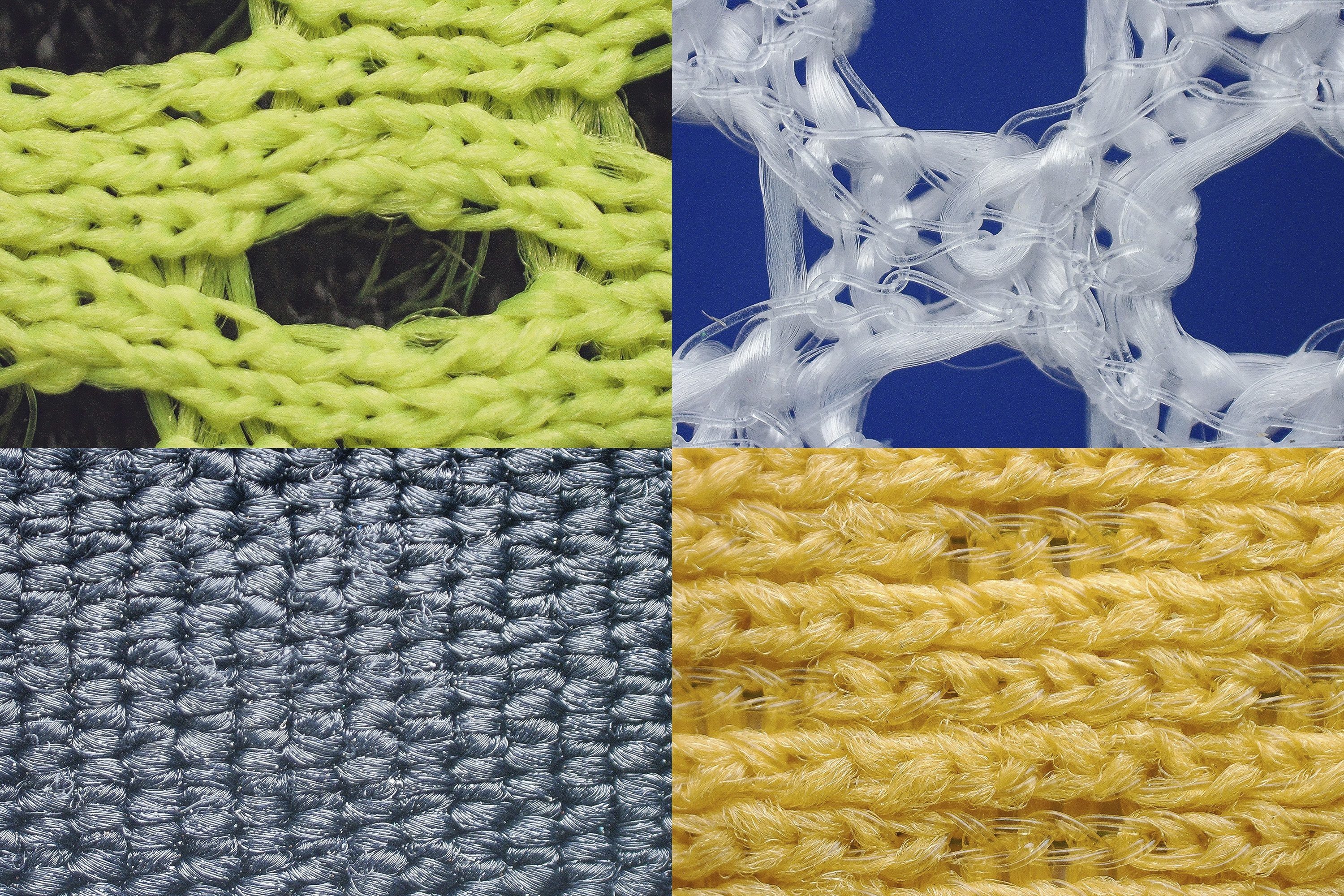
What also helps score a low breathability result is the gusseted tongue, as mentioned above in this guide.
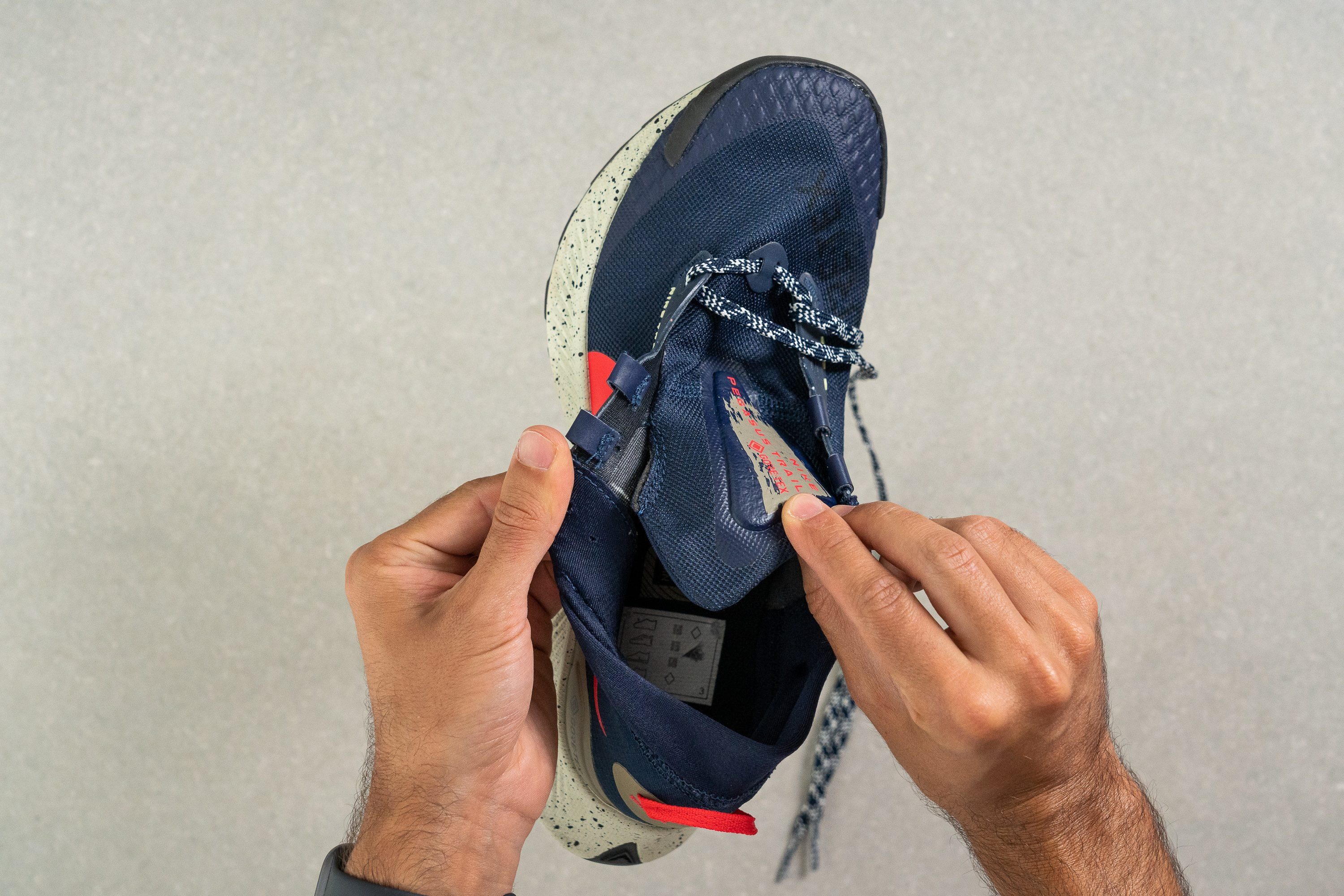
These gussets are another layer of fabric that does not allow the shoe to breathe (while stopping the water from getting inside).
If you want to learn more about breathability, read The definitive guide to running shoe breathability.
You will pay more for waterproof trail running shoes
More technologies means more money. Waterproof membranes are expensive. For context, look at these averages:
- Avg price of non-waterproof trail running shoes (no carbon plate): $135.9
- Avg price of all non-waterproof trail shoes: $144.1
- Avg price of waterproof trail shoes: $158.1
